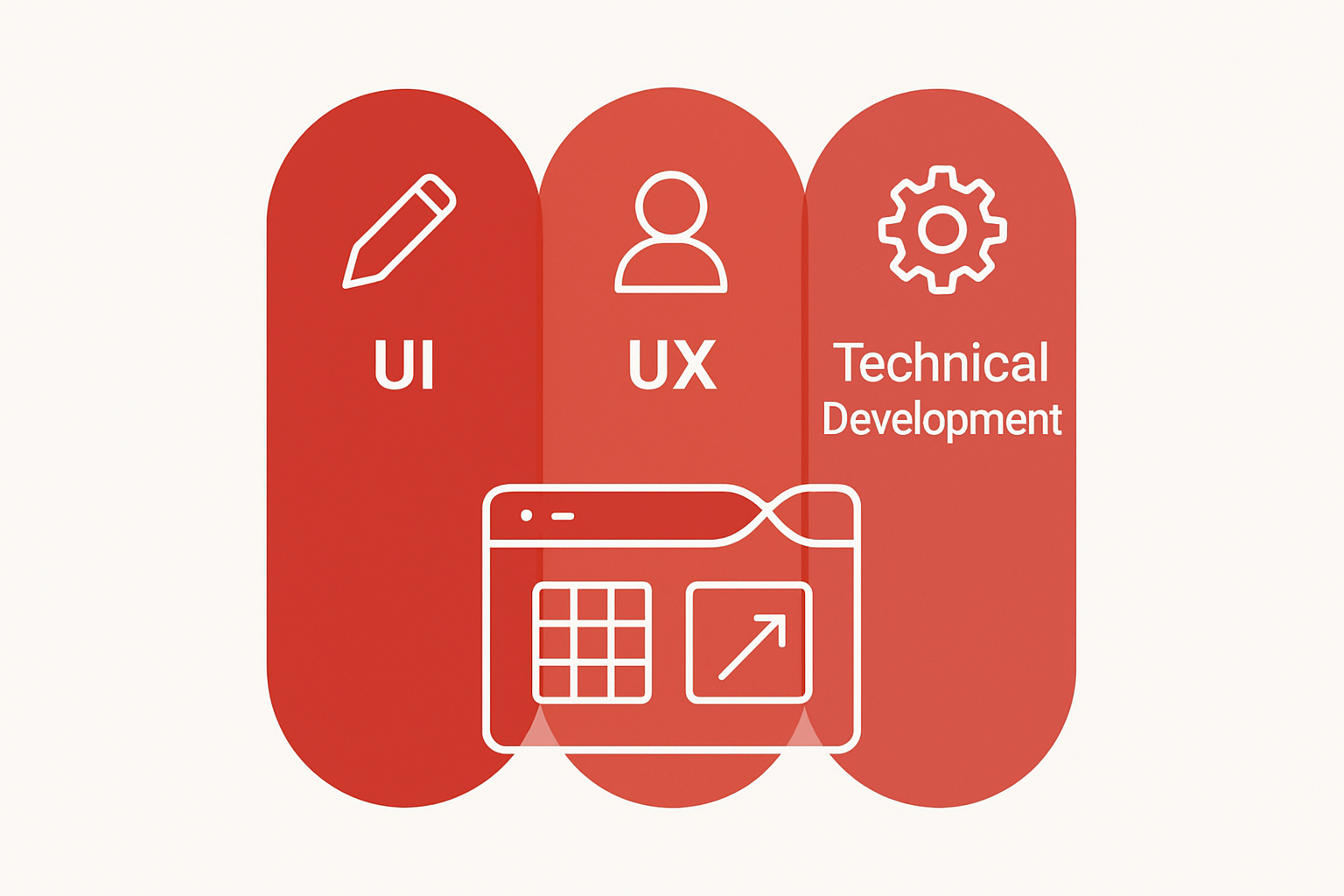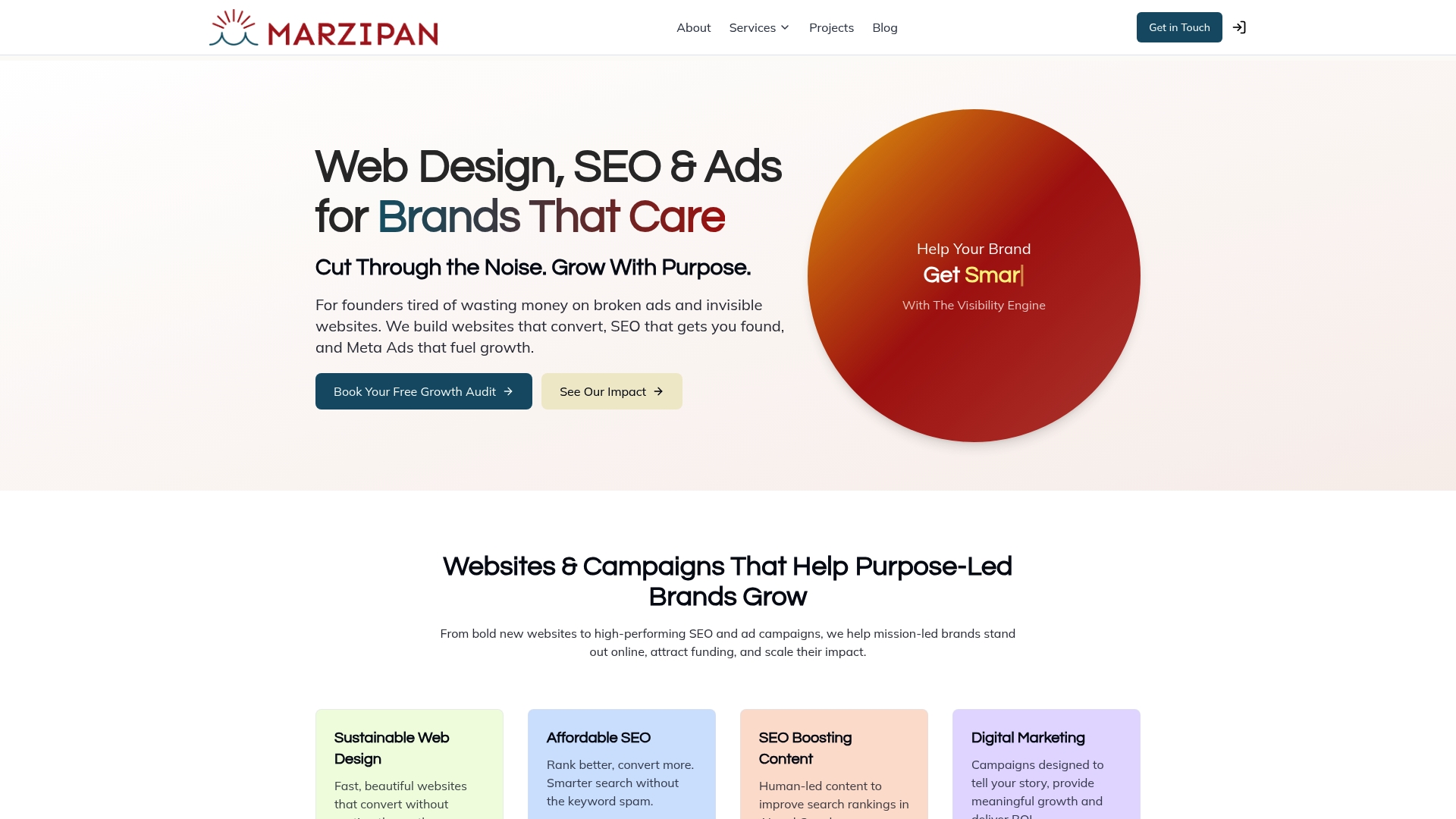What is Web Design? Understanding Its Importance and Functionality
Web design shapes how we experience the internet every day and for many organisations a website is their main point of contact with the world. Yet while we instinctively judge a site by its looks, users make first impressions in milliseconds and it is the behind-the-scenes decisions that truly define success. What might surprise you is that the real power of web design is not about flashy graphics but about how expertly crafted sites quietly build trust, guide choices, and keep people coming back without anyone noticing why.
Table of Contents
- Understanding The Concept Of Web Design
- The Importance Of Web Design In The Digital World
- Key Components Of Effective Web Design
- How Web Design Impacts User Experience
- The Role Of Trends And Technology In Web Design
Quick Summary
| Takeaway | Explanation |
|---|---|
| Effective web design is user-centric. | Prioritising user needs enhances navigation and engagement, creating a seamless digital journey. |
| Visual elements communicate brand identity. | Consistent design helps convey organisational values and establishes credibility, influencing user perception. |
| Accessibility is crucial for inclusivity. | Implementing accessibility principles ensures that digital platforms are usable by all individuals, regardless of ability. |
| Responsive design is essential for performance. | Websites must function effectively across different devices to meet diverse user expectations and enhance usability. |
| Strategic design impacts user trust and conversion. | Thoughtfully crafted web experiences facilitate user engagement, leading to higher trust levels and better conversion rates. |
Understanding the Concept of Web Design
Web design represents a sophisticated blend of creative artistry and technical expertise focused on crafting digital experiences that communicate, engage, and solve user needs. At its core, web design is about creating visually compelling and functionally robust websites that effectively represent an organisation’s digital presence.
The Fundamental Components of Web Design
Web design integrates multiple critical elements to construct meaningful online experiences. Web design fundamentally involves several interconnected disciplines that work harmoniously to deliver exceptional digital platforms:
- Visual aesthetics and graphic design
- User interface (UI) architecture
- User experience (UX) principles
- Technical functionality and responsive development
These components interact dynamically to create websites that are not just visually appealing but also intuitive, accessible, and purposeful.
Below is a summary table highlighting the fundamental components of web design alongside their key roles, supporting rapid understanding for readers exploring what makes digital platforms effective.
| Component | Description |
|---|---|
| Visual aesthetics and graphic design | Shapes the website’s appearance, establishing visual appeal and communicating brand identity. |
| User interface (UI) architecture | Structures interactive elements, enabling users to engage efficiently with the site. |
| User experience (UX) principles | Guides how users feel and interact, focusing on usability, accessibility, and satisfaction. |
| Technical functionality and responsiveness | Ensures the site operates smoothly across devices, providing a seamless and robust experience. |
 Professionals must understand how colour psychology, typography, layout principles, and interactive elements combine to communicate effectively through digital interfaces.
Professionals must understand how colour psychology, typography, layout principles, and interactive elements combine to communicate effectively through digital interfaces.
Strategic Approaches in Web Design
Successful web design goes beyond superficial appearance. Technical development and architectural considerations play crucial roles in creating websites that perform exceptionally across different devices and platforms. Strategic web design emphasises user-centric approaches that prioritise seamless navigation, clear information architecture, and engaging interactions.
Effective web designers consider multiple dimensions when crafting digital experiences:
- Understanding target audience requirements
- Ensuring cross-device compatibility
- Implementing intuitive navigation structures
- Maintaining consistent brand representation
By integrating technical proficiency with creative vision, web designers transform abstract concepts into tangible digital experiences that connect organisations with their audiences through purposeful, intelligent design strategies.
The Importance of Web Design in the Digital World
Web design has become mission-critical for organisations seeking to establish meaningful digital presence and connect effectively with their target audiences. A well-designed website fundamentally enhances information sharing across digital platforms, serving as a powerful communication and commercial interface.
Digital First Impressions Matter
In an increasingly digital landscape, websites function as virtual storefronts and primary interaction points between businesses and potential customers. The quality of web design directly influences user perception, brand credibility, and engagement potential. First impressions are formed within milliseconds, making visual appeal and functional clarity paramount.
Successful web design communicates organisational values through strategic visual elements:
- Consistent brand representation
- Clear visual hierarchy
- Intuitive navigation structures
- Responsive and accessible design
Strategic Business Communication
Beyond aesthetic considerations, web design serves as a sophisticated communication platform. Websites must effectively convey complex information, guide user journeys, and facilitate seamless interactions. Read more about our strategic approach to web design that transforms digital interfaces into powerful communication tools.
Effective web design addresses multiple strategic objectives:
- Establishing brand identity
- Generating user trust
- Facilitating digital interactions
- Supporting marketing and sales objectives
Professional web design bridges technological capability with human-centred communication, creating digital experiences that are not just visually compelling but strategically purposeful. By understanding user psychology, technological constraints, and brand storytelling, web designers craft digital platforms that transcend mere visual representation to become dynamic, interactive communication ecosystems.
Key Components of Effective Web Design
Effective web design transcends visual aesthetics, integrating multiple sophisticated elements that collectively create compelling digital experiences. These interconnected components work harmoniously to deliver websites that are not just visually appealing but functionally exceptional.
The following table concisely compares the key aspects of effective web design, giving readers a clear overview of the essential areas and their associated objectives.
| Aspect | Purpose |
|---|---|
| User Experience and Accessibility | Ensure inclusivity and usability for all users. |
| Technical Performance and Responsive Architecture | Deliver efficient, fast websites that adapt to different devices. |
| Visual Communication and Brand Representation | Communicate organisational identity and values through design. |
User Experience and Accessibility
Web accessibility is fundamental in modern design strategies, ensuring digital platforms are inclusive and usable for all individuals. Designing with universal accessibility principles means creating digital experiences that accommodate diverse user needs and capabilities.
Key accessibility considerations include:

- Compatibility with assistive technologies
- Clear, readable typography
- Intuitive navigation structures
- Colour contrast and visual clarity
Technical Performance and Responsive Architecture
Websites must perform seamlessly across multiple devices and platforms. Explore our approach to sustainable web design that prioritises both performance and environmental consciousness. Technical performance involves:
- Rapid page loading speeds
- Mobile responsiveness
- Cross-browser compatibility
- Efficient code architecture
Visual Communication and Brand Representation
Visual design serves as a strategic communication tool that conveys organisational identity, values, and messaging. Effective visual components transform websites from mere information repositories into dynamic brand storytelling platforms.
Professional web designers meticulously craft visual experiences by considering:
- Consistent colour palettes
- Strategic typography selection
- Balanced compositional layouts
- Meaningful visual hierarchy
By synthesising technical proficiency, user-centric design principles, and creative vision, web designers create digital environments that are not just functional interfaces but engaging, intuitive experiences that connect organisations with their audiences.
How Web Design Impacts User Experience
User experience represents the emotional and functional journey individuals navigate when interacting with digital platforms. Web design serves as the critical infrastructure that either facilitates or hinders this journey, transforming complex digital interactions into seamless, intuitive experiences.
Psychological Elements of Digital Interaction
Good web design reduces cognitive load by making information easy to find and navigating through digital interfaces more natural. Understanding human perception and interaction patterns becomes fundamental in creating websites that feel instinctive and engaging.
Psychological design considerations include:
- Predictable navigation patterns
- Consistent visual language
- Emotional resonance through design elements
- Minimising user decision fatigue
Emotional Architecture of Websites
Websites are not merely functional tools but emotional experiences that communicate organisational values and personality. Learn more about our strategic web design approach that prioritises human-centred digital experiences. Design elements strategically trigger specific user emotions:
- Colour psychology
- Typography that conveys tone
- Imagery that evokes connection
- Interactive elements that create engagement
Conversion and User Trust
Effective web design directly influences user trust, perception, and ultimately conversion potential. Professional designers understand that every visual and interactive element communicates a narrative about organisational credibility.
Key trust-building design principles encompass:
- Clear, transparent information architecture
- Professional, contemporary visual design
- Smooth, predictable user journeys
- Responsive and accessible interfaces
By meticulously crafting digital experiences that balance aesthetic appeal with functional clarity, web designers create powerful communication platforms that transform passive website visitors into engaged, trusting users.
The Role of Trends and Technology in Web Design
Web design exists at the intersection of technological innovation and creative expression, constantly evolving to meet changing user expectations and technological capabilities. The dynamic landscape of digital design demands continuous adaptation and strategic understanding of emerging technologies and design philosophies.
Technological Evolution and Design Frameworks
Web design trends are fundamentally shaped by technological advancements that expand the boundaries of digital interaction. Modern web designers must navigate complex technological ecosystems, transforming technical constraints into creative opportunities.
Key technological considerations include:
- Responsive design frameworks
- Progressive web application technologies
- Advanced JavaScript libraries
- Cross-platform compatibility standards
Emerging Design Paradigms
Design trends reflect broader technological and cultural shifts, representing more than superficial aesthetic choices. Explore our sustainable approach to web design that integrates cutting-edge technologies with thoughtful, user-centric principles. Contemporary web design trends emphasise:
- Minimalistic, clean interfaces
- Micro-interactions and subtle animations
- Dark mode and adaptive colour schemes
- Immersive, storytelling-driven experiences
Technological Standards and Accessibility
Technology in web design is not merely about visual innovation but creating inclusive, accessible digital environments. Professional designers understand the critical role of technological standards in democratising digital experiences.
Accessibility and technological standards involve:
- Web Content Accessibility Guidelines (WCAG) compliance
- Semantic HTML structures
- Performance optimisation techniques
- Universal design principles
By embracing technological innovation while maintaining a human-centred design philosophy, web designers create digital experiences that are both technologically sophisticated and inherently intuitive.
Turn Web Design Knowledge Into Lasting Impact for Your Mission
Your organisation understands that effective web design is about more than just visuals. The article highlights complex challenges like making digital experiences accessible, intuitive, and emotionally engaging. Yet, building a website that consistently delivers this level of connection while supporting your mission can feel overwhelming. Many purposeful brands struggle to blend sophisticated design elements with sustainable, user-centred technology. Ordinary sites fail to create trust or drive results, leaving missions unseen and unheard.

Now is the ideal moment to transform your online presence with a team that shares your ethical drive. At Marzipan, we specialise in sustainable web design, modern SEO, and digital advertising for mission-led businesses. Our approach combines user experience, accessibility, and technical performance to build websites that genuinely connect with your community. Discover how our strategic web design solutions can make your digital platform a true force for good. Explore what is possible and start building your next chapter today.
Frequently Asked Questions
What is web design?
Web design is the process of creating visually compelling and functionally robust websites that represent an organisation’s digital presence, integrating elements like visual aesthetics, user interface (UI), user experience (UX), and technical functionality.
Why is web design important for businesses?
Web design is crucial for businesses as it helps establish a digital presence, creates first impressions, enhances brand credibility, and facilitates effective communication with users, thereby influencing engagement and conversion rates.
What are the key components of effective web design?
Effective web design includes user experience and accessibility, technical performance and responsive architecture, and visual communication through brand representation, all working together to create compelling digital experiences.
How does web design impact user experience?
Web design significantly affects user experience by shaping the emotional and functional journey of users. Good design facilitates intuitive interactions, reduces cognitive load, and fosters user trust, ultimately influencing users’ engagement with digital platforms.







